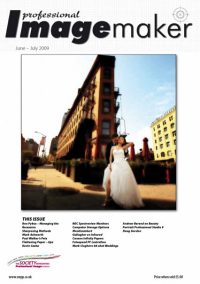articles/Postproduction/portraittouchup-page2
Truth, Lies and Portrait Touch-up - part 2 of 1 2 3
by Mike McNamee Published 01/06/2009
Of vanity, self deception and the airbrush...
Human vanity has now been well investigated by science. And the results do not show us in a particularly good light.
In one key experiment, 100 randomly selected people were asked if they would accept airbrushed photographs of themselves - 98 said they would not. From this it would seem that people are very much against artificially improved images of themselves.
Sadly this is also wrong. These same people were then shown 10 pictures of themselves from 1, completely natural no touch-up at all, through to 10, very heavily airbrushed and enhanced. A huge majority, (97 of the 100 people), chose a 9 or a 10, the very heavily improved pictures. Nobody chose a completely natural picture.
Also interesting was the fact that virtually none of the subjects noticed that the airbrushed photographs had been touched up at all. Instead they gave the credit to the photographer, with comments such as, 'the photographer really caught me well there', or 'that's a really good angle for me'. However heavily touched up the photograph, the subjects always seem to take it as a true likeness - as long as the photograph is flattering.
Strangely, not one of the subjects said of the heavily retouched photographs, 'that's not the real me, my wrinkles are really much deeper than that, and my eyes are much smaller and more piggy' or 'the photographer completely failed to capture my enormous, wobbly chin and droopy eye bags'. Odd that.
Or perhaps not so odd. With humans, vanity always wins out over reality. It appears virtually all of us want to appear younger, more successful and more beautiful than we really are. We are simply very unwilling to admit this publicly.
The simple and obvious lesson for portrait and wedding photographers is that people want to be visually flattered, (indeed far more than any of us at Anthropics thought possible). They want to be made to look as elegant and beautiful as they possibly can, and further, research also shows that if you satisfy this need for flattery well you will increase your business substantially.
But, and this is a big but, at the same time, people do not want to appear shallow and vain. They do not want to be seen to be unhappy with their real appearance. So care needs to be taken...
Sophisticated airbrushing software is becoming ever cheaper and ever more easy to use. Software can now actually be 'trained' in human beauty, which means that sophisticated portrait touch-up is now becoming simple and quick to do by virtually anybody. Because of this, it is rapidly moving out of its high-end celebrity and fashion niche, and becoming a very viable option for the general portrait and wedding photographer.
How is this possible? Current high-end, general-purpose photo-editing software such as Photoshop is essentially large and (in the case of Photoshop) very powerful set of graphical tools. However, while these tools are extremely powerful they are also essentially 'dumb', the electronic equivalents of a traditional artist's brushes, pencils, stencils, airbrushes, etc. Such tools have no more knowledge of the subject than Da Vinci's paintbrush had of the Mona Lisa. With this software, knowing what do with the tools is left entirely to the artist, which means that the artist must be very skilled indeed to get good results.
However, it is also possible to actually have the software 'learn' stuff, to learn things that humans find beautiful. And once the software has been trained, it can operate not just as a tool, but as a sort of digital assistant, actively helping the user to enhance a portrait for instance.
The disadvantage of such trained software is that it is no longer general purpose, but specific to a class of objects such as faces. So it is not a replacement to Photoshop but rather a useful addition, for specific users, as such software is capable of producing sophisticated results far faster and more easily than a general-purpose tool.
The Portrait Professional software, which we have been researching and developing over the last 10 years, has been trained in human beauty. The software has been shown literally hundreds of pictures of faces and a panel voted as to what was attractive and unattractive in each photograph. From this, the software 'learned' what people found attractive in faces, and could then offer the user controls specifically tailored to make any given face subtly more attractive.
Given this training, the controls such 'trained' software offers can now be specifically customised to improve the actual face being worked on. For example, if the face being touched up has a particularly weak jaw line, the 'jaw' slider will subtly increase the size of the jaw. Conversely, if the subject has a large double chin, the jaw slider will reduce the chin and slim the subject, as much or as little as the photographer wants.
Please Note:
There is more than one page for this Article.
You are currently on page 2
- Truth, Lies and Portrait Touch-up page 1
- Truth, Lies and Portrait Touch-up page 2
- Truth, Lies and Portrait Touch-up page 3
1st Published 01/06/2009
last update 09/12/2022 14:58:05
More Postproduction Articles
There are 20 days to get ready for The Society of Photographers Convention and Trade Show at The Novotel London West, Hammersmith ...
which starts on Wednesday 14th January 2026





